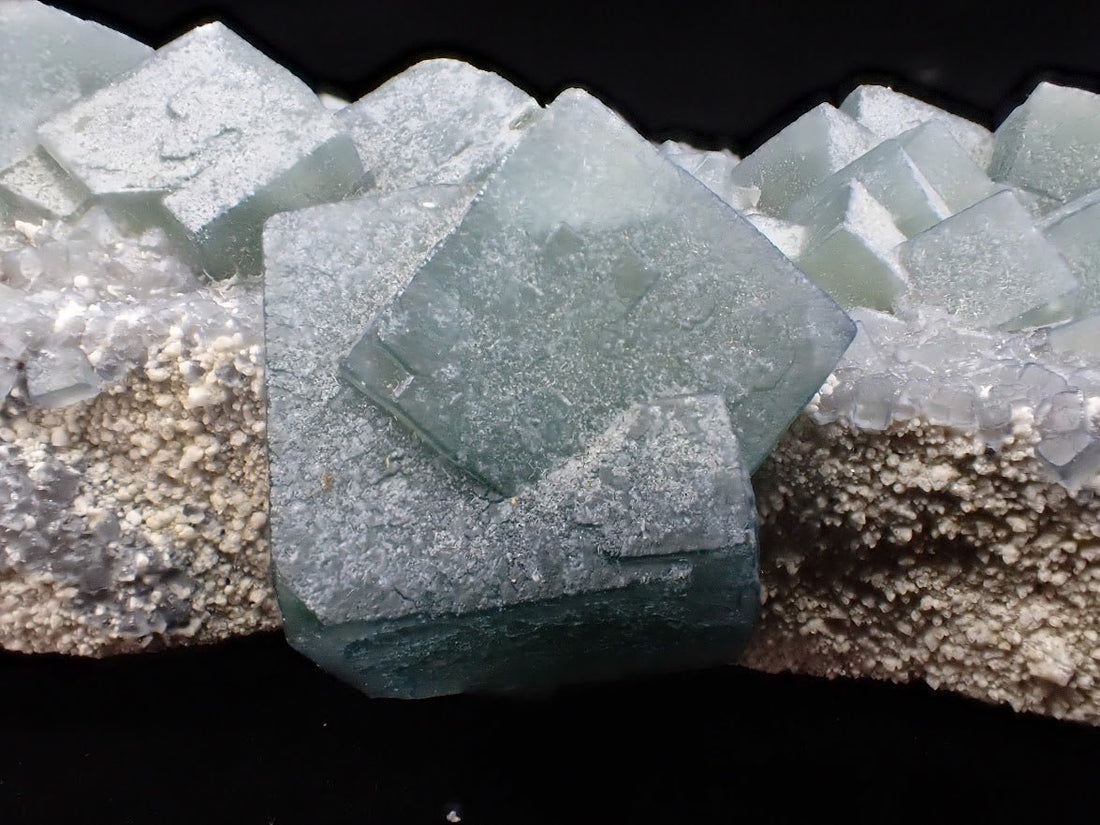
What Is a Matrix Specimen? And Why Does It Matter?
Share
If you’ve browsed premium mineral listings or watched collectors at a show, you’ve probably seen the phrase “in matrix.” But what does it really mean — and why does it increase the value of a specimen? Whether you’re new to the world of minerals or refining your eye, understanding matrix is key to collecting with confidence.
What Does “Matrix” Mean in Crystals?
In mineral collecting, the matrix refers to the host rock — the natural surface or environment in which a crystal originally formed. When a specimen is described as being “in matrix,” it means the visible crystals are still attached to or growing out of their original rock base.
For example: a fluorite cube embedded in limestone, or quartz points emerging from a slab of granite, are matrix specimens.
Why Matrix Specimens Matter
Matrix specimens are highly valued by collectors because they show the crystal in its original context — and that offers both scientific and aesthetic value.
- Geological authenticity: You can see how the mineral grew, in what orientation, and in what type of host rock
- Visual impact: Matrix often creates contrast in color, texture, or structure — elevating the beauty of the specimen
- Collector value: Natural placement is rarer than loose or fully removed crystals, especially when intact and damage-free
Types of Matrix in Crystal Specimens
1. Natural Rock Matrix
This is the most common type — where the crystal is embedded in or growing out of unaltered host rock, like quartz on granite or fluorite on limestone.
2. Crystalline Matrix
Sometimes, crystals form on other crystals — such as pyrite on quartz, or calcite on fluorite. These are still considered matrix specimens when the base supports the growth of another mineral.
3. Pseudomatrix or Reconstructed Matrix
In some cases, crystals are re-attached to base rock to mimic natural placement. While this may be aesthetically pleasing, high-end collectors prefer truly natural matrix connections.
What Makes a Good Matrix Specimen?
Not all matrix specimens are created equal. Look for:
- Secure attachment — the crystal should not look glued, forced, or out of place
- Good contrast — matrix should highlight, not distract from, the crystal
- Balanced display — ideally, the piece sits well and shows off its best angle naturally
- No excessive repair — some stabilization is acceptable, but minimal intervention is preferred
Legacy’s Standards for Matrix
At Legacy Crystals and Minerals, we value matrix specimens for what they reveal about origin, formation, and beauty. When we source a piece “in matrix,” we ensure it is:
- Natural and unforced — no fakes, glues, or unnatural arrangements
- Geologically accurate — representing the real growth environment
- Visually compelling — with shape, flow, and collector-grade presence
Final Thoughts: The Power of Placement
A crystal in matrix is like a painting still in its original frame. It tells the whole story — not just what the mineral is, but where and how it lived. For collectors, it’s the difference between an object and an origin. And for anyone who appreciates natural beauty, matrix adds grounding, elegance, and authenticity.
When in doubt? Choose the crystal that’s still connected to where it came from.



